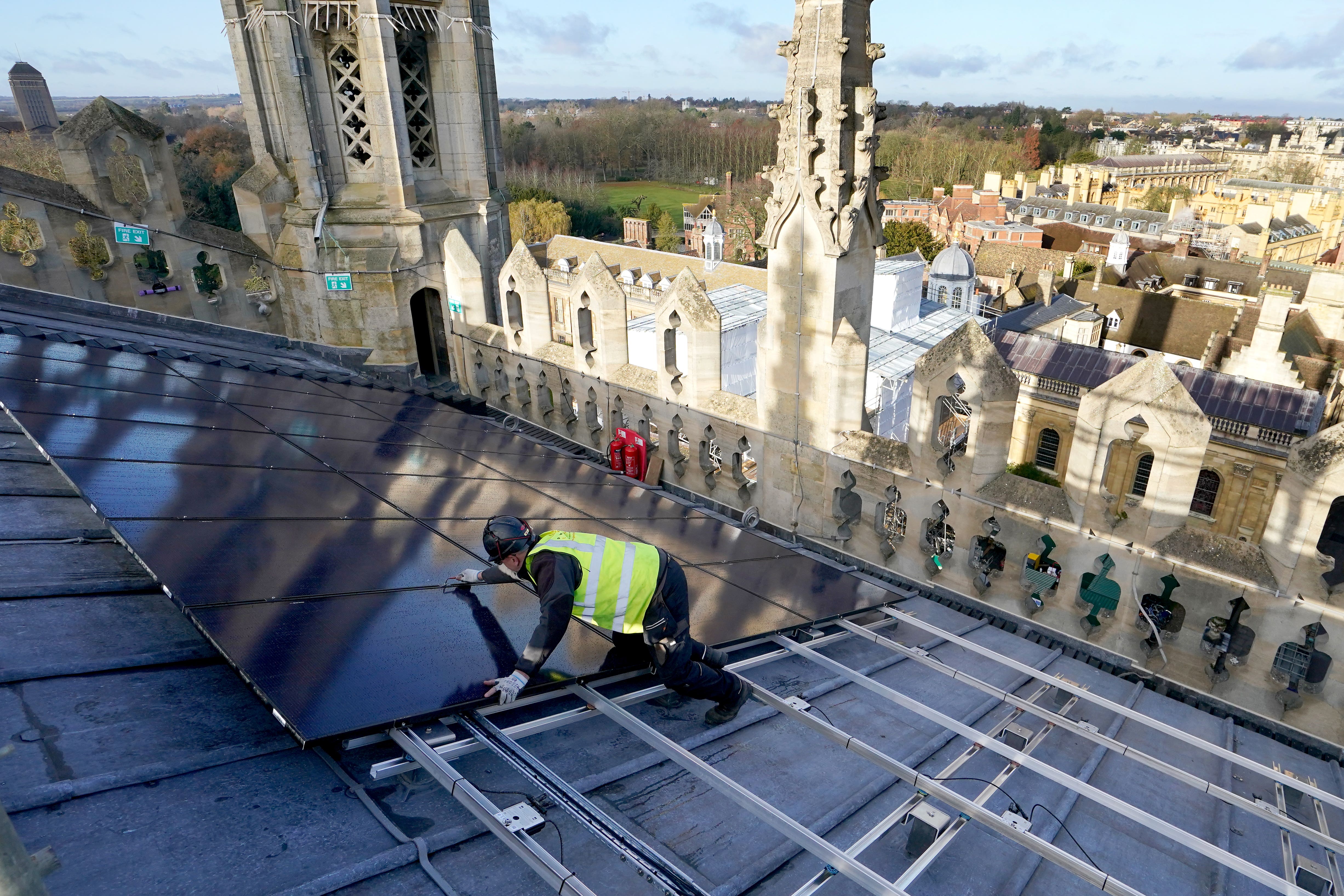Solar panels on roof of famous Cambridge chapel ‘send climate change message’
The panels at King’s College are expected to be installed by the end of the year.

Your support helps us to tell the story
From reproductive rights to climate change to Big Tech, The Independent is on the ground when the story is developing. Whether it's investigating the financials of Elon Musk's pro-Trump PAC or producing our latest documentary, 'The A Word', which shines a light on the American women fighting for reproductive rights, we know how important it is to parse out the facts from the messaging.
At such a critical moment in US history, we need reporters on the ground. Your donation allows us to keep sending journalists to speak to both sides of the story.
The Independent is trusted by Americans across the entire political spectrum. And unlike many other quality news outlets, we choose not to lock Americans out of our reporting and analysis with paywalls. We believe quality journalism should be available to everyone, paid for by those who can afford it.
Your support makes all the difference.Work to install 438 solar panels on the roof of Cambridge’s King’s College Chapel is under way in a symbol of “commitment to being good stewards of our environment”.
While the panels are set to reduce King’s College’s carbon emissions by more than 23 tonnes per year, the scheme was criticised by Historic England after it was given the green light.
The heritage body said it was “disappointed” that permission was granted, adding it was being done “at some cost to the beauty of Cambridge’s finest building”.
A tower of scaffolding still stands beside the iconic chapel, with installation of the panels hoped to be completed by the end of this year and power from them coming online in early 2024.
Dr Gillian Tett, provost at King’s, said: “Many people love the chapel, they love the silhouette, they love it as the face of Cambridge, and we’re very mindful of that responsibility.
“Out of that responsibility there also becomes a chance to send a wider message about the need to try to grapple with climate change.
“We’ve tried to take measures which reduce the visual impact of the solar panels. We’ve lowered them slightly so you can’t see them quite so easily.
“The reality is you can still just about glimpse them if you look hard and that, frankly, is a reminder to all of us that we need to think about how we’re living for the future.”
She said it was “only one step on the road towards cleaner, greener energy but it is a potent and inspirational symbol of our commitment to being good stewards of our environment”.
Dr Tett said she wanted to speak about the project ahead of Cop28 and the Christmas carol services at King’s.
She said the project is “almost finished but not quite” due to “supply chain hitches”.
Shane Alexander, college project manager, said installation of the solar panels was designed to “dovetail” with work to replace the grade one-listed chapel’s lead roof.
The 15th century chapel’s roof had exceeded its natural lifespan and was no longer watertight.
“The restoration required that the entire lead covering was removed, recast and replaced, all while maintaining access to the building for visitors, daily services and concerts,” he said.
“The project was extraordinarily complex and has been delivered by a fantastic team.”
The roof restoration began in September 2022 and work on the solar scheme began in March.
Arrays of 219 panels will be fixed to each of the north and south slopes of the chapel roof and will generate an anticipated 123,000 kilowatt hours per year, the college said.
This will help the college in its ambition to decarbonise its operations by 2038 and reduce its carbon emissions by more than 23 tonnes each year, the equivalent of planting 1,090 trees, King’s said.
It added that the new panels, combined with other existing ones including on an accommodation block, would reduce the annual electricity demand of the college’s main site by around 5.5%.
The Reverend Dr Stephen Cherry, Dean of the Chapel, said: “Whilst the economic input of the solar panels are valuable in monetary terms, its main public benefit is in the carbon saving over a period of many years.
“It must also be seen as part of the college’s drive to make its buildings, and especially the chapel, more efficient and as a tangible example of how the chapel can and should be contributing to the moral and ethical wellbeing of this place of learning.”
Mark Hart, joint managing director at Barnes Construction, which is working on the project, said he hoped the “success of the scheme will encourage similar endeavours that promote sustainability in historic buildings”.
Oliver Caroe, heritage and conservation-accredited architect for the project, said the “example of what can be achieved is already inspiring and informing others”.
The project has been exclusively funded by philanthropic donations made to the chapel and college over “many years”.